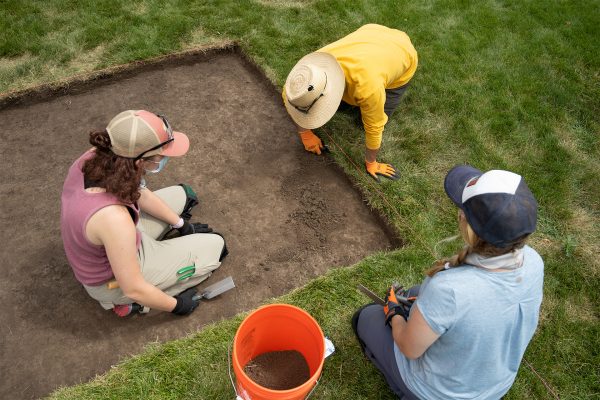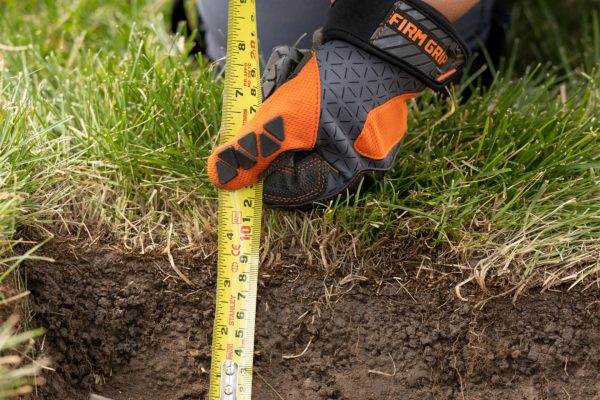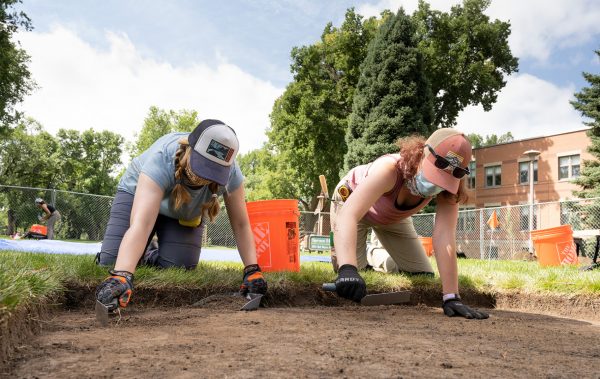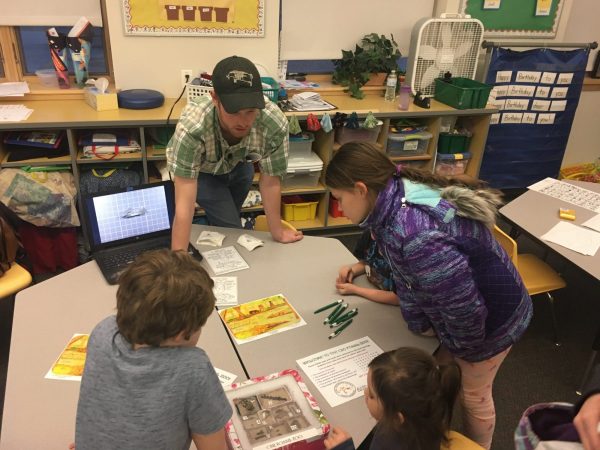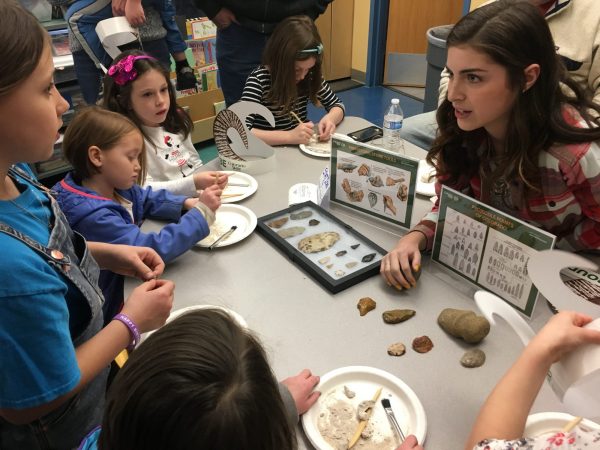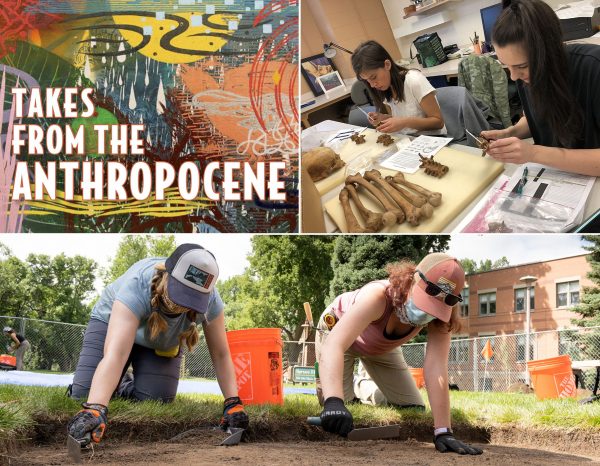
In the Department of Anthropology and Geography, together, we imagine, solve, protect, discover, and understand. From youth outreach to ethnography, ecological forecasting to excavation, students and faculty share what it means to be human in the past and in the present.
Together, we advance the human experience.
Discover
Archaeology Field School students dug into CSU’s history through an on-campus excavation in Summer 2020 after the pandemic cancelled plans to study in Tennessee. Field school participants confirmed the location of and unearthed materials from the CSU Claim Building, the first structure built on campus 150 years ago. Students learn to use digital surveying and mapping technology and field methods and practices through Anthropology and Geography field programs.
Read more about the excavation of the CSU Claim Building by archaeology students.
Understand
In Human Osteology and other biological-anthropology courses, students examine and handle bones and replicas to learn how to recognize materials and the diversity of life among humans, apes, and other species. From mapping lost routes and cities, to practicing “flint-knapping” and striking rocks to re-create primitive tools, to simulating animal tooth marks on fossilized bones, Anthropology and Geography research often rely on technologies and field techniques to understand the past and present.
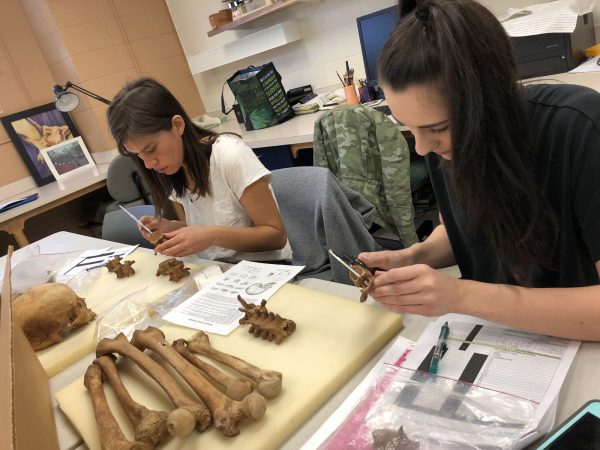
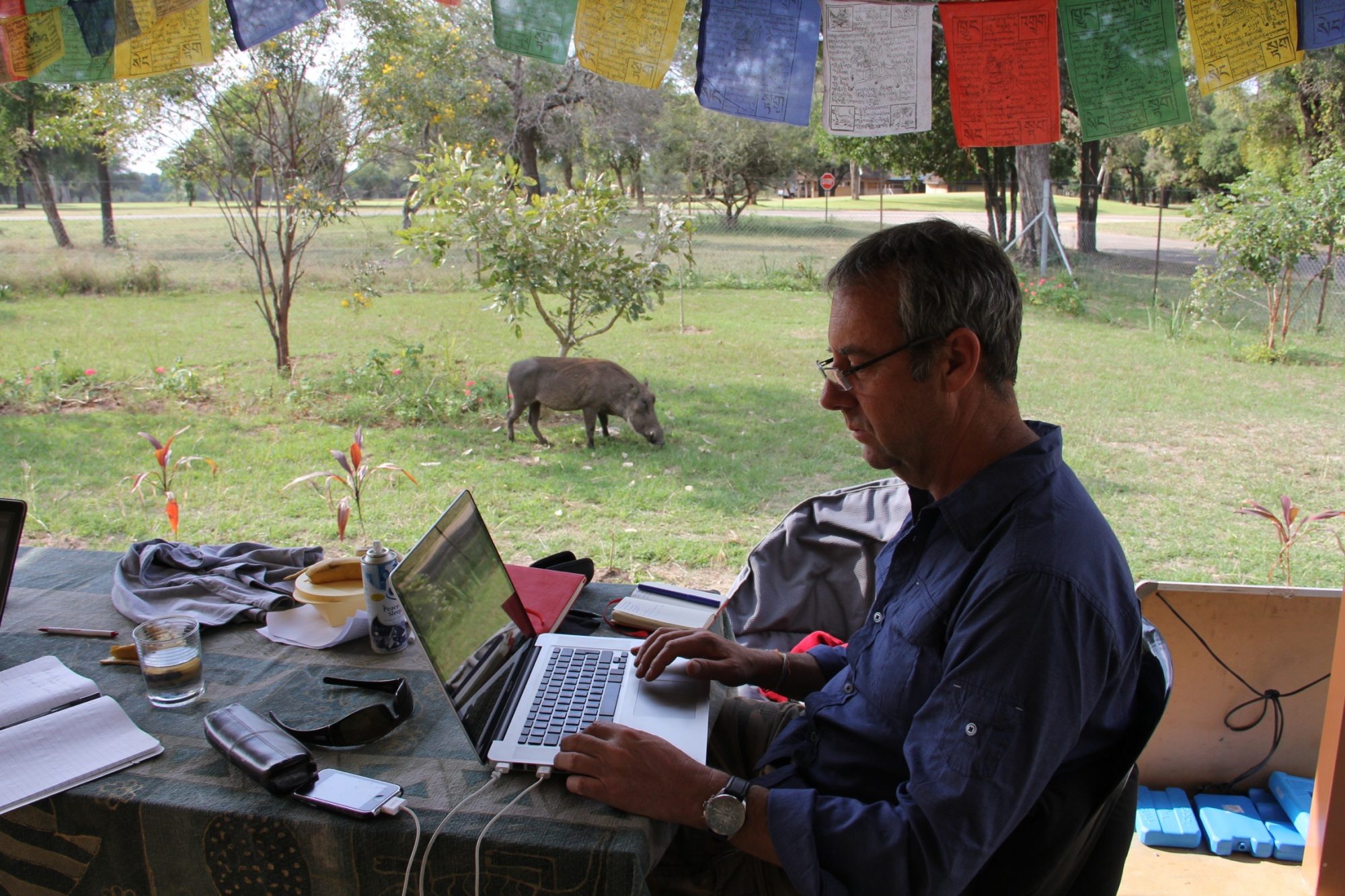
Protect
In the biodiversity hotspot of Kruger National Park in South Africa, rapid development poses threats to elephants, lions, rhinos, and other African wildlife. To understand the effects of current and future changes in land use in and around Kruger, Geography Professor David Bunn and his research group, including colleagues from CSU and beyond, are developing an “ecological forecasting” system – with the backing of a $750,000 award from NASA. The project will apply field data, aerial images, and data from NASA earth-observation satellites to help guide decisions about “rewilding” areas to improve and conserve wildlife habitat. “What is especially exciting, for us,” Bunn said, “is the role CSU will now play in deploying advanced earth-observation technology, such as the GEDI high-resolution laser on the International Space Station, in the service of rural southern African communities.”
Learn more about the grant project of David Bunn and his research group.
Imagine
At Rice Elementary School Science Night (held in late February 2020 before masks and lockdown), local students get to size up skulls, gaze at fossils, and excavate replica artifacts with members of the Anthropology Club and the Anthropology Graduate Student Society. Through outreach, field trips and internships, our majors share what makes them excited about our fields and learn about the careers where their studies can lead them.
Read more about the outreach and public engagement in the Department of Anthropology and Geography.
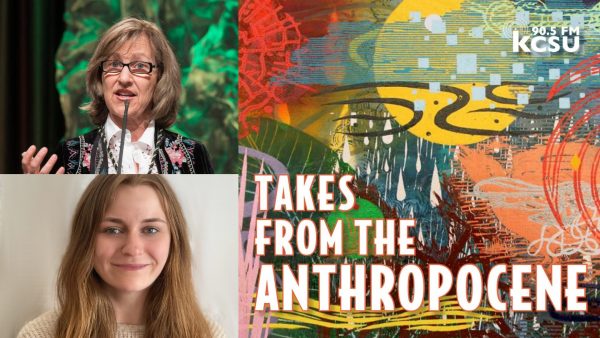
Solve
In Public Anthropology and Global Environmental Challenges (ANTH 405), undergraduate students are charged with podcasting what they preach. Professor Kate Browne emphasizes and explains knowledge and practices in anthropology and ethnography that can address worldwide social and environmental issues and dilemmas – that’s public anthropology. In Fall 2020, Browne guided students to develop a podcast series – for the actual public – learning media and communications skills as well as public anthropology. The series, Takes from the Anthropocene, includes 14 episodes that cover climate change, ocean pollution, Indigenous rights, and other topics. “This class left me with a solid foundation of hope for the future,” said student Amanda Kowalski. “Public anthropology works.”
Learn more about and listen to the podcast “Takes from the Anthropocene.”

